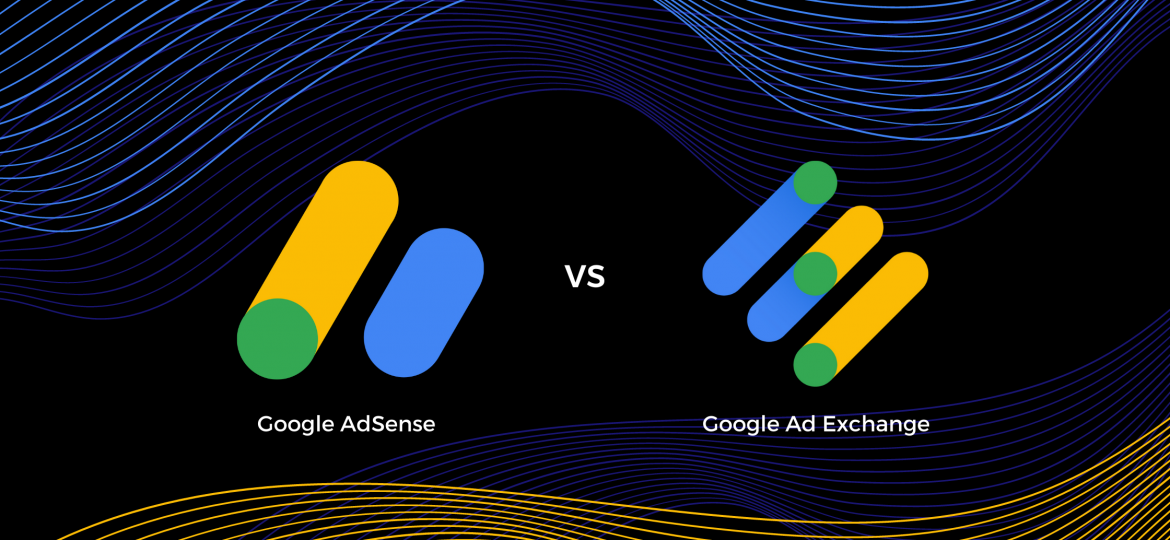Google AdSense and Google AdExchange (AdX) are both advertising services operated by Google. They allow publishers to make money by running advertisements. So, what is the difference between Google AdX and AdSense? Which platform would be best for you to offer your ad inventory on? In this post, we’ll go over the key features and discrepancies between Google AdX and AdSense. What is Google AdSense? Google AdSense was created as an internal product in 2003. It is a free cost-per-click tool that places ads on websites based on the content and visitors of the publisher. All that enables publishers to benefit from each ad click. Besides that, since CPM (cost per 1000 impressions) is in demand, publishers can receive extra revenue each time a CPM ad is served to the website and seen by a user. Technically speaking, advertisers bid for ad placement in the same way as they do on the Google Ads platform. AdSense advertisements are derived from Google Ads, the Google Display Network, and other Google products. Any publisher can use it because of the simple sign-up process. One of the best features of AdSense is that it instantly connects publishers with a large number of advertisers. This is the most famous advertisement software on the Internet at the moment. It offers an excellent opportunity for webmasters and content creators to monetize their traffic — Google pays billions to its publishers per year. If you’ve ever wondered, how can you make money with AdSense – just try…
Google Ad Manager
Recently, facing pressure from regulators, Google finally unveiled its buy-side and sell-side pricing policies. The numbers were shared in two separate blog posts, detailing the cut the company takes from both publishers and advertisers when transactions occur within its ecosystem. Fees across google’s ecosystem It’s no secret that Google charges the vast majority of advertisers based on their objectives (cost-per-action – e.g. a click, filling out a form, etc.). Publishers on the other hand are paid on a CPM basis, which is achieved by evaluating the potential of each impression and then converting it into a bid. Essentially, Google’s algorithm determines how likely it is for a particular impression (user) to meet the advertiser’s objective, and then assigns a CPM price to it. Obviously, there’s a lot of “converting” happening on the backend and results vary all the time. On average, however, Google says that publishers receive 69% of what advertisers pay for programmatic ads. How is that broken down? Here’s an example of how $100 ad dollars are distributed within the ecosystem: Google Ads charges advertisers 14%, which leaves us with $86. Then, Google Ad Manager takes a further 20% cut from publishers ($17), leaving them with $69. Source: Google Ad Manager When it comes to Display & Video 360 (Google’s enterprise solution for big brands), the end result is exactly the same, but on average, advertisers pay $13, while $18 are taken from the publisher’s side. There’s one thing in the blog post though that definitely catches your…
RTB; The Evolution of Programmatic Advertising The advent of RTB (Real-Time Bidding) in the late 2000’s changed the way digital publishers monetized their ad space forever. Auctions were introduced, enabled by technology, to bid on an impression-by-impression basis. Thus, replacing sequential CPM paid directly for ad space or fixed fee, sponsorship-focused strategies replicating print advertising. These auctions rely on a bidding system but unlike real-life auctions, where the highest bid wins after a series of bids, here, all bids happen at the same time. Traditionally, with a real-time auction, the highest bidder would, of course, win, however, only paying what the second-highest bid was.




